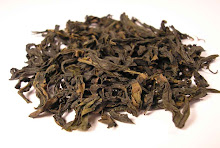
A tea house or tearoom is a venue centered on drinking tea. Its function varies widely depending on the culture, and some cultures have a variety of distinct tea-centered houses or parlors that all qualify under the English language term "tea house" or "tea room." In Central Asia this term could refer to Shayhana in Kazakh, Chaykhana in Kyrgyz and Chayhona in Uzbek which literally means a tea room. In China, a tea house is traditionally quite similar to the American "cafe", albeit centered around tea rather than coffee. People gather at tea houses to chat, socialize, and enjoy tea. Young people often meet at tea houses for dates. Especially, the Guangdong (Cantonese) style teahouses are very famous abroad, such as in New York, San Francisco, etc. These tea houses not only serve tea, but also dim sum people can eat different kinds of food when they drink tea. People call these kinds of tea houses , chálou. In Germany, tea house (also called Teehaus) was famous during the Third Reich era where the German Dictator Adolf Hitler used to have his daily walk and tea at a Teehaus on Mooslahnerkopf hill near his residence Berghof, in the Bavarian Alps. Hitler's tea house was a round cylindrical structure built in the woods where Hitler, his close friends, party colleagues and secretaries used to have their daily afternoon walk followed by tea. Tea was Adolf Hitler's favorite drink during his reign. It seems having a separate tea house was a culture in many countries in Europe. In the U.K., Canada and the U.S., a tearoom is a small room or restaurant where beverages and light meals are served, often catering chiefly to women and having a sedate or subdued atmosphere. A customer might expect to receive cream tea or Devonshire tea, often served from a china set, and a scone with jam and clotted cream – alternatively a High tea may be served. In Scotland teas are usually served with a variety of scones, pancakes, (Scottish) crumpets and other cakes.







No comments:
Post a Comment